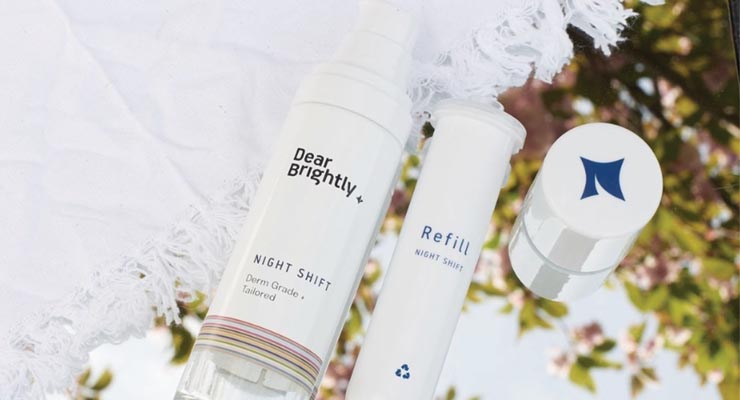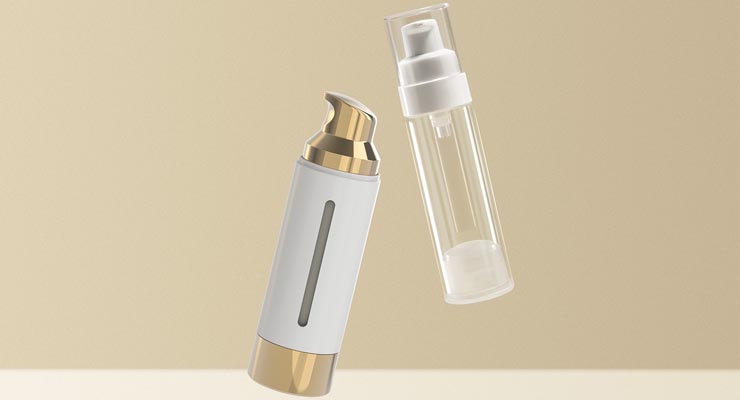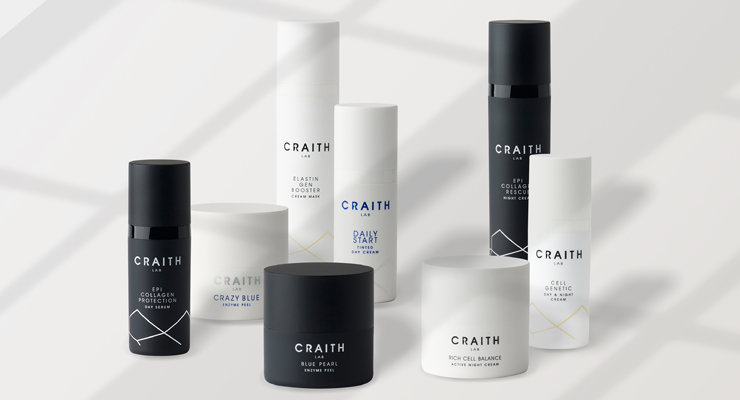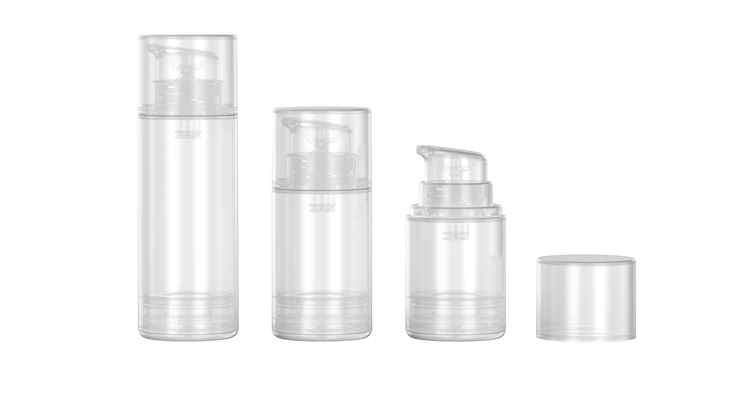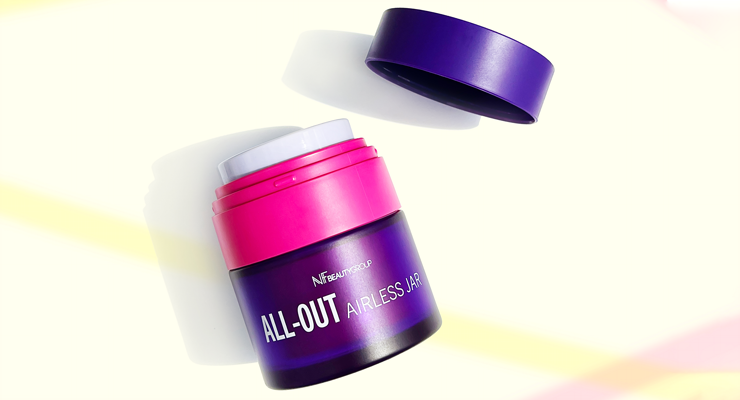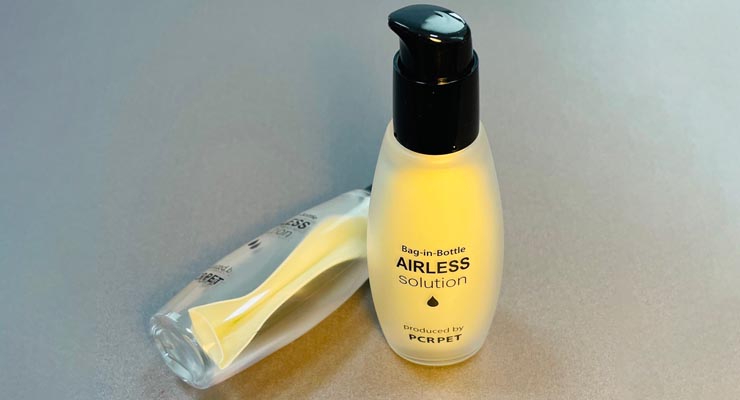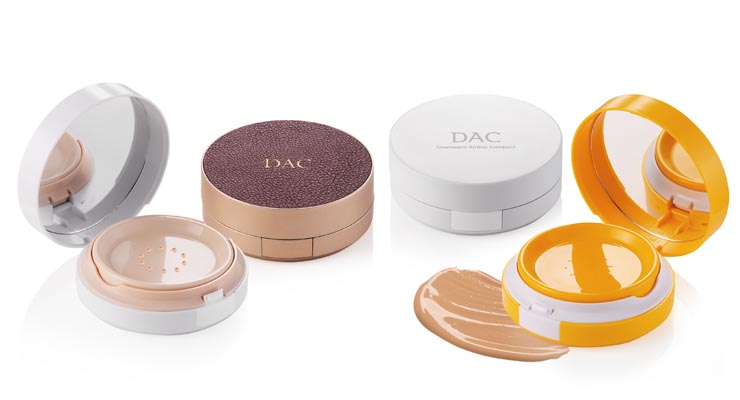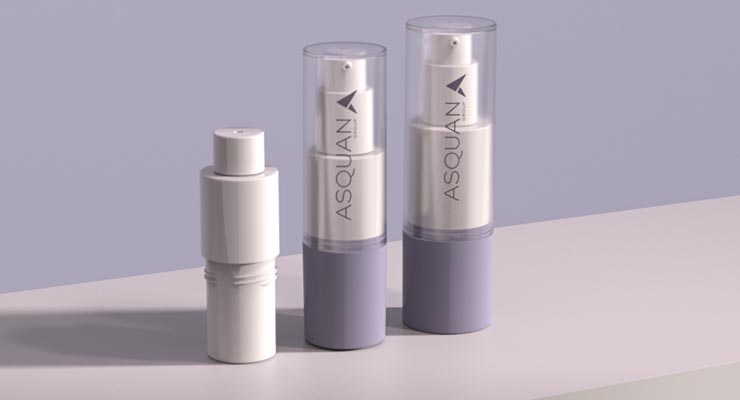Joanna Cosgrove, Contributing Editor05.31.22
There are many considerations when it comes to choosing the right packaging for a beauty formulation. The active ingredient lifespan of some products simply won’t survive a standard package that’s repeatedly unsealed, dipped into and resealed for access and application. And sensitive ingredients that are especially prone to degradation need packaging that will protect their integrity, shielding them from the potentially damaging effects of repeated exposure to light and air.
Airless packaging, however, is specially designed to preserve formulas in an ideal state until the point of application, and are now available in a variety of packaging options like bottles, jars and tubes, with new materials and configuration developments.
“Airless” packaging literally means that formulas are housed in an oxygen-free state for maximum protection, explains Ashley Kim, overseas sales department senior manager for South Korea-based NEST-FILLER PKG.
“[Airless packaging ensures a] formula is never in contact with air, until the moment it is used, [and] makes it ideal for protecting products from external contamination…such as air-contact, touch by hands, evaporation and any foreign matters,” she explains.
Anne-Laure Khouri, senior category lead at Quadpack, adds that airless is a particularly helpful option for high-performance and organic products containing especially sensitive ingredients, ensuring consumers experience the very best a formula’s ingredients have to offer—and that’s just one of the benefits.
“Airless reduces the need for artificial preservatives and extending shelf life,” Khouri says, also noting the configuration’s additional dispensing advantages. “Formulas can be dispensed in a 360-degree angle, which is particularly useful with hair mists or body creams, where you have to reach up, down or around to apply the product.
“For high-value products, or those with active ingredients, it is important that a precise amount is applied with each use—airless systems dispense an exact dosage with each stroke,” Khouri continues. “And compared to most other types of packaging, airless packs have a high restitution rate—waste is avoided, as nearly all of the formula is used.”
Eco-Friendly Adaptations
Every aspect of the beauty industry has been impacted by the demand for environmental accountability. Airless packaging providers are rising to the challenge with new innovations in refillable configurations and improved material choices.Glass is infinitely recyclable and compatible with a wide range of formulations. The new DEA series from Baralan is a line of glass airless containers representative of a “new philosophy of primary packaging in glass,” according to Maurizio Ficcadenti, global research and development manager, because it requires less componentry and a reduction in material amount “to produce a lighter, more functional package with big brand impact potential.”
DEA, which stands for Developing the Evolution of Airless, has no internal plastic container. The filled product is directly in contact with its glass container. Ficcadenti explains that the DEA series was developed via an innovative manufacturing process that significantly reduces energy consumption for a more sustainable approach. “Another feature of this new solution is the ability to eliminate lubricant use, which is due to the unprecedented smoothness of the piston inside the glass container,” he says.
The DEA series is available in a classic and a premium version, both of which allow for the possibility of single-use or rechargeable/reusable solutions. It comes in three capacities (15-, 30- and 50ml) and has a standard GPI 18/400 neck finish. “In each version, the transparent glass allows for the filled product’s color to remain visible for an authentic appeal,” comments Ficcadenti. However, the style of this series also provides advantages regarding customization through various decoration techniques.
Glass airless systems from SamHwa are positioned to be both refillable and sustainable for ultimate clean beauty goals. “Our glass airless bottle system is patented on the engineered functional simplicity of the filling and replacement process,” says Vince McCarthy, the company’s vice president of U.S. sales. “Incorporating glass into the product brings an extra measure of quality and luxe while also being more sustainable.”
SamHwa’s airless products provide for a nearly complete product evacuation, extended formula protection due to greatly reduced oxidation, lower residues, clean and precise dosing applications as well as exact dosage control. It’s Airless Glass Refillable (AGR) product features a glass outer unit that feels luxe in the hand and is perfectly matched to companion PP componentry (PCR options are also available). McCarthy calls it “a compelling combination of sustainability, eco-friendliness and functionality.”
Dear Brightly selected SamHwa’s glass airless dispensing format for its retinoid and vitamin-rich skincare products, choosing a 20ml bottle for its Vitamin C serum, a 30ml bottle for its retinol serum and a 50ml bottle for its moisturizer, with each product ranging from thicker to thinner in terms of formula viscosity.
The bottles are decorated to include custom color-matched, multi-pass silk screening plus hot stamping on the inner and outer bottles, as well as the over cap.
Last year, SamHwa relaunched its Eco Pump in a metal-free format that’s made almost entirely of PP and doesn’t need to be disassembled before recycling. The modular dispenser is offered for use as a solution across the company’s airless and dispensing pump offerings. Dosing spans five amounts (.15cc, .2cc, .3cc, 2.0cc, 3.5cc), making it an ideal choice for small format skin care and larger format body wash and shampoo applications.
Quadpack’s Regula Airless range proved to be the perfect choice for Craith Lab. The Belgian skincare brand launched three cutting edge beauty lines that tap into the science of epigenetics (the study of how lifestyle impacts our genes). Each product is targeted to “protect and heal skin cells,” via delectate, science-based formulations developed for customers with different ages and lifestyles. The Blue Line, for youthful and sensitive skin types, is enriched with probiotics, while the
Black Line features a patented ingredient called EPI-Powershield 3 for anti-aging and skin detoxification, and the Gold Line is an EpiTECH formula targeted for rejuvenation.
Craith Lab chose Quadpack’s 50ml Regula Airless Jar and Regula Airless in 30- and 50ml sizes. “We wanted to apply the same high-quality standards we have for our formulas to the packaging. Regula Airless is key for formula stability and performance, and it’s made in Europe, which is an added-value,” says Peter Smeels, Craith Lab CEO.
Quadpack additionally expanded its Regula Airless range of bottles and jars to include a refill format as a way for brands to adopt a more sustainable eco-proposition. A snap-on ring safeguards a threaded, airless inner component that can be easily accessed and replaced with a refill by consumers.
An international men’s skincare brand recently tapped APC Packaging to provide an airless package that contained 51% post-consumer resin (PCR). APC is also in talks with the brand to provide another airless packaging solution that can contain more than 70% PCR.Rick Ponte, vice president of project engineering at APC Packaging, says APC Packaging offers airless packages ranging from 5- to 250ml in a variety of shapes and sizes including mono-material packages as well as refillable options. “We can also incorporate PCR into most airless packages,” he says.
“If we don’t offer what you are envisioning, APC can also create private molds for the entire packaging or a component of the package.”
Rocky Yoon, chief manager of overseas sales at Taesung, feels the technology behind airless packaging is being leveled up, but the environmental problems associated with the use of plastic packaging is giving rise to packaging that strikes an exciting balance of environmental consciousness without sacrificing quality or customer user experience.
Earlier this year, Taesung launched PP mono airless options and has been working to develop new packages for its brand customers. “These products were not actually developed with targeting any requirement of specific brand and [were targeted] to provide sustainability solutions to our valuable customers with meeting quality standards of normal airless packaging,” Yoon says. “During the development, we had many technical challenges especially with material friction, restitution, discharge and leakage with maintaining the product concept. Using PP material only overcame them all by internal technical capability with many years of airless packaging experience and researching.”
One of the resulting PP mono airless packages is designed for cream formulations in 30-, 50-, 70-, 100- and 120ml capacities. An additional “essence” variety comes in 30- and 50ml fill sizes. The company is also planning to debut a 0.2ml dosage PP mono airless for essence type formulas this June at MakeUp in Paris.
New Options in Airless Configuration
While airless bottles are tried-and-true beauty staples, some packaging providers have innovated the airless concept into other packaging formats as well.NF Beauty Group, headquartered in Fullerton, CA, has expanded its portfolio to include many new types of airless packaging options to its stock library. “Some new airless packaging includes our All-Out Airless Pump and All-Out Airless Jar, which offer a refillable keepsake glass bottle with inner PP airless pumping mechanism,” says the company’s Andrea Greff, design manager. “The combination of refillable and airless systems has been a growing request that we have seen within our industry, as it offers a luxe sustainable story.”
Greff says the All-Out Airless Pump comes in 15-, 30- and 50mL sizes and features a glass outer bottle with an airless inner PP bottle that can be removed for replacement. The All-Out Airless Jar comes in 30- and 50mL and is similarly comprised of a glass outer jar with a replaceable airless inner jar.
The company has also introduced metal-free airless packaging, replacing the usual metal springs found in traditional airless pumps to offer a mono-material airless pump, which allows for easy recyclability for consumers. These new configurations are known as the Celeste Jar and Celeste Pump.
Olive Packaging offers a Bag-in-Bottle (BIB) airless configuration in an assortment of shapes. An outer PCR PET layer is thick, heavy and can be molded into limitless shapes. Brands can choose either an inner liner made of an FDA-certified elastomer that shrinks when used in combination with an airless dispenser, or a double layer EVOH (or PET) option depending on their formula and application needs.
Jeff Hwang, Olive Packaging’s overseas sales representative, says the heavy-blown BIB bottles, outfitted with airless pump or spray dispensers, are a snap for brands to customize, and deliver a high oxygen barrier and UV block.
NEST-FILLER PKG provides a variety of airless options. The company’s latest launch is the patented Downward Airless Compact (DAC), an airless compact for color cosmetics.
Kim says DAC’s focus on improved user convenience and product stability help it stand apart from other airless compacts. DAC is engineered to be a two-part, body and base package comprised of a push plate that works together with a piston. The configuration eliminates leakage and stabilizes the airless functionality for the wide, thin structure compact. It also affords a visual cue of the amount of product available in the package, while providing for easy bottom-filling.
Kim says DAC is a hygienic format for color cosmetics because the formula is protected from air contamination and doesn’t need to be touched by the hands. The package has a 15ml fill volume and 0.15cc dosage.
To help satisfy a recent client need, NEST-FILLER PKG also adapted its 20ml Fixed Nozzle Airless (FNA) solution to accommodate a 15ml eye cream product. “If you fill 15ml only in the 20ml airless bottle, the pump cannot work properly because of a huge amount of air inside of the bottle, causing too many empty strokes (pumps) and makes users give up using the product,” Kim explains. “To support our client’s eye cream project, we developed a higher piston to reduce the filling amount from 20ml to 15ml and our client launched their eye cream perfectly in a 15ml size.”
And finally, Asquan Group’s latest airless option is called Easy Airless, and it’s specially designed for easy use and re-use. The 3-in-1 airless configuration is refillable, recyclable and made of recycled materials. According to the company, Easy Airless delivers the airless experience in a package that’s a snap to disassemble and refill. Users give a simple twist to access and replace the cartridge portion of the package, which is also fully recyclable and has a metal-free pump made for guilt-free tossing into the recycling bin.

